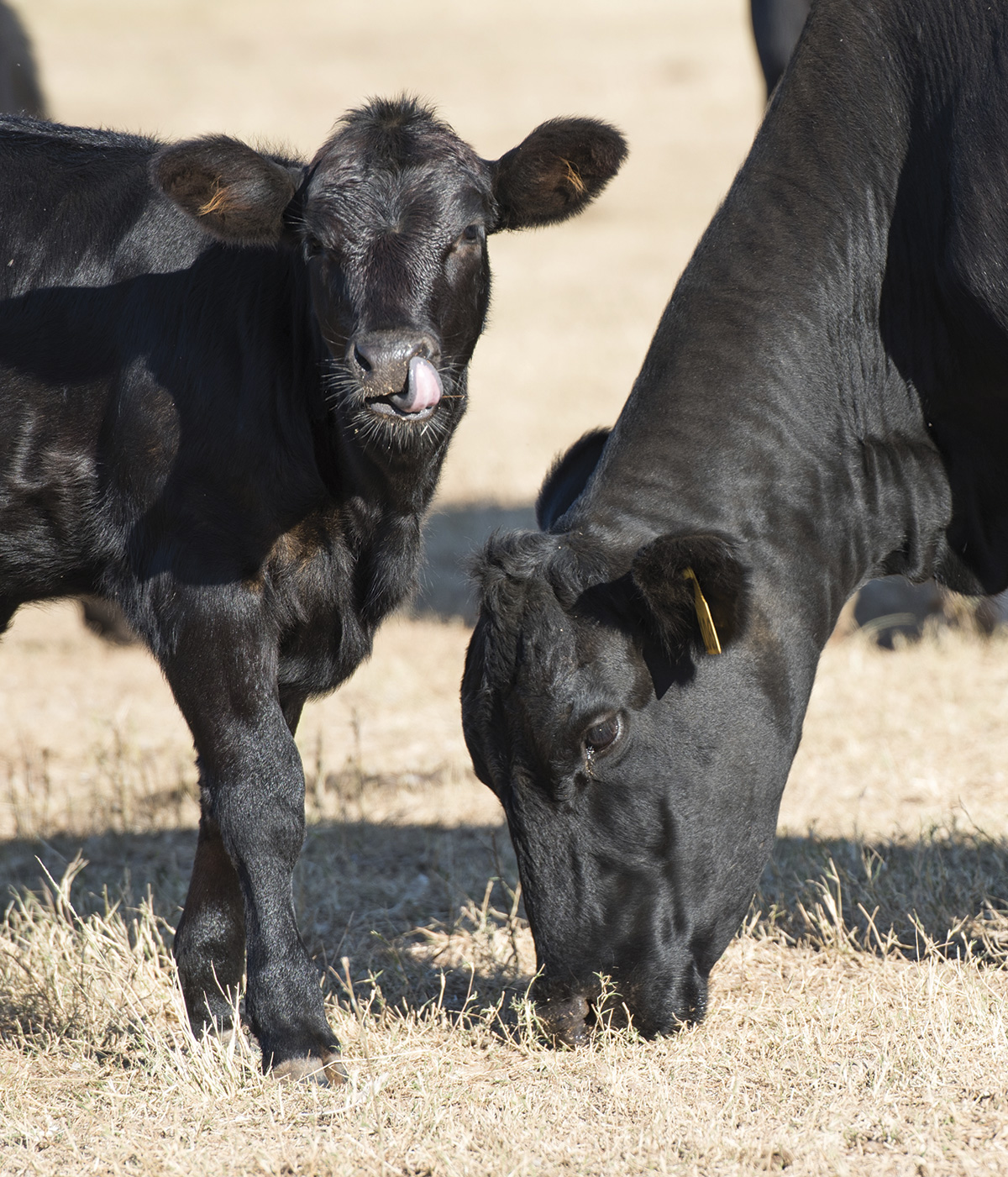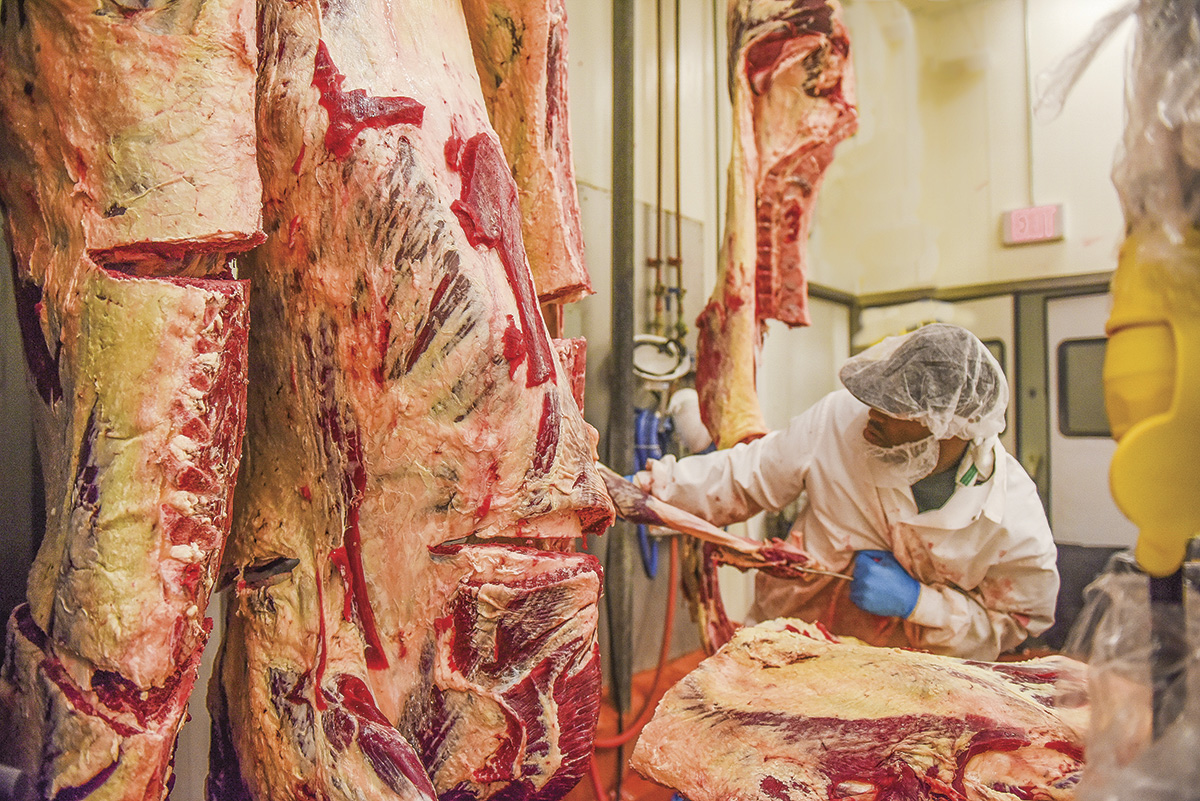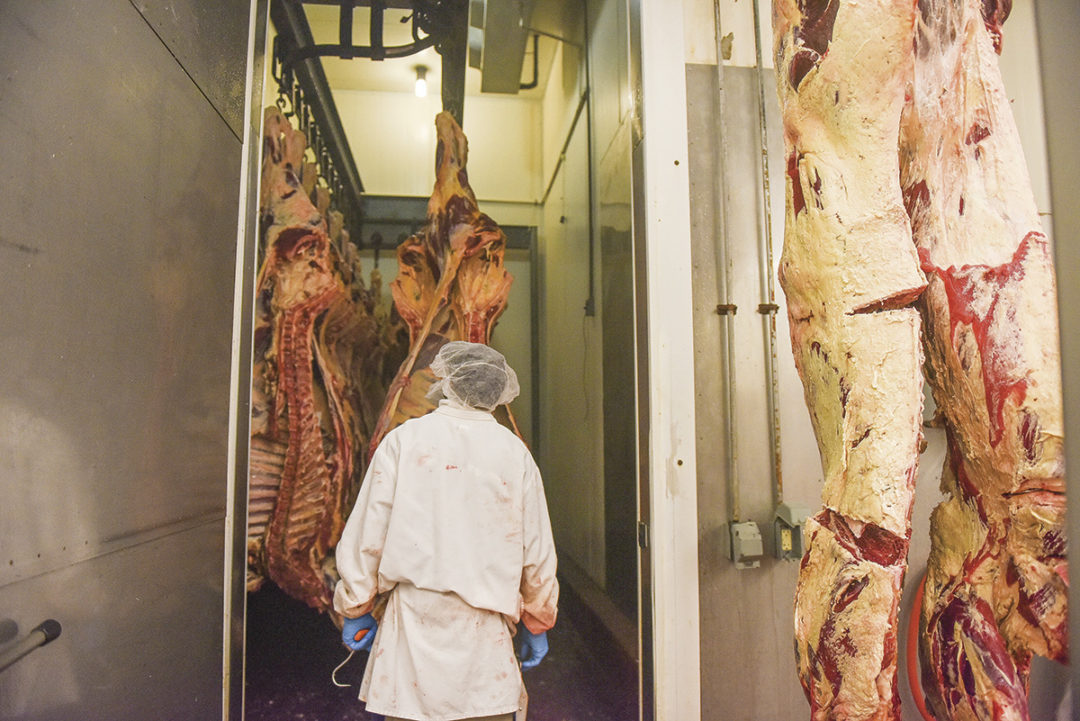With the price of cattle and beef often in flux, wise producers are always looking for ways to build financial resiliency. One way to capture the most value out of cattle is to process them and market the meat directly to customers. Unfortunately, creating a local slaughterhouse can seem out of reach for many cattle farmers and ranchers – the necessary capital investment and the hassle of figuring out a tangle of regulations often stop producers before they start.
Located in Hopewell, New Jersey, Double Brook Farm has successfully navigated the challenges of on-farm livestock processing. Owned and operated by Jon and Robin McConaughy, Double Brook Farm comprises roughly 500 acres of owned and rented land, though they have farmed as much as 800 acres.
The McConaughys started the farm in 2004 with the original goal of producing for themselves and getting closer to the land. They discovered that the demand for quality, pasture-raised meat far exceeded their original expectations – but there was a problem – getting their animals processed. “That’s the major problem – the small farmer has a problem getting the animal to the slaughterhouse and processed,” says Jon McConaughy – citing the centralization of all things agricultural as the source of the obstacle.
Deciding to vertically integrate the farm, the McConaughys eventually established a restaurant, a marketplace and a USDA-inspected slaughterhouse to complement Double Brook Farm. “On-farm processing is the solution,” states McConaughy.
The McConaughys toyed with the idea of establishing a mobile slaughterhouse. Ultimately, they decided that because they would need to build significant infrastructure at any farm where a mobile slaughterhouse operated – water testing, pens, shelter, plus a place to cut and wrap meat – a USDA-inspected slaughterhouse located on-farm was the better answer.
Currently, Double Brook Farm processes roughly 150 head of cattle annually. (The cattle are currently raised at another farm, but the McConaughys are in the process of increasing the number of cattle they raise on their own farm.) All the product coming from the on-farm slaughterhouse is sold at the restaurant and marketplace they established. (They have recently sold the restaurant and a part interest in the marketplace, but these local establishments remain their sole market.)
 Midsize cattle thrive on the originally marginal land at White Oak Pastures. Photo courtesy of White Oak Pastures.
Midsize cattle thrive on the originally marginal land at White Oak Pastures. Photo courtesy of White Oak Pastures.
Lessons learned
According to Jon McConaughy, the key to his operation is processing nothing other than his own animals. “Technically, we are not a slaughterhouse – we are on-farm processing.” The distinction is the McConaughys are trying to capture all the income from their farming enterprise – not make money from being a slaughterhouse for other farmers.
The numbers do pan out, according to McConaughy. The facility they built cost roughly $500,000 to build and costs roughly $125,000 to operate annually, but if the farm opted to have the slaughtering done elsewhere, it would cost about $350,000 annually. They save $225,000 each year and will have made back their initial investment in not so many years.
Jon McConaughy says that the biggest hurdle in setting up a USDA-inspected slaughterhouse might not be what most farmers expect. “Most farmers think the USDA is this big hurdle.” Double Brook Farm did not find that to be the case. “Our neighbors are our biggest challenge,” says Jon McConaughy. Noting that although people are supportive of the farm in general and the McConaughys' goals, a “not in my backyard” mentality also presents challenges for the daily operation of the farm and for the presence of a slaughterhouse – which many non-farmers view in a negative light.
Despite the challenges, Double Brook Farm is thriving. In order to help other farmers reach the same level of success, McConaughy has established a nonprofit called The Decency Foundation, with the goal of assisting others in finding the capital and other resources necessary to build their own on-farm slaughterhouse. “Every farm should have its own processing,” states McConaughy, explaining that once the processing facilities are built, they might be best served by a local rotating butcher to help keep labor costs reasonable.
Will Harris from Bluffton, Georgia, built his own USDA-inspected slaughterhouse in 2007. A fourth-generation farmer, Harris owns and runs White Oak Pastures, comprising 3,200 acres on land his great-grandfather settled in 1866. After getting a degree in animal science at the University of Georgia, Harris raised cattle conventionally, using chemicals and the standard array of antibiotics and hormones. In 1995, he switched to regenerative practices.
With a herd of “1,500 mama cows,” Harris’ operation is large for the Southeastern region. The USDA-inspected facility currently processes 100 head of cattle, 40 hogs, and 40 sheep and goats per week. All the animals come from White Oak Pastures. Not long ago, White Oak Pastures marketed all its products to chains such as Kroger, Publix and Whole Foods. Now, Harris sells one-third of his products directly to consumers, either at his farm store or delivered to homes through Fedex or UPS.
Asked where he sees his business going in the future, Harris says, “I don’t know if I am a niche producer producing food for people who want good-quality pasture-raised meats or if I’m an early innovator who is going to change how things are done. I don’t know.” All the cattle on White Oak Pastures are 100% grass fed.
Harris also cites the capital investment needed to build a USDA facility as a challenge. Harris estimates the farm has roughly $7 million invested into the infrastructure and facilities necessary to being USDA-inspected. The USDA regulations can also be a challenge to meet, although Harris recognizes that the regulations “are there for a reason.”
In addition, Harris notes that it is difficult for an individual farmer to compete in the current agricultural market. “You’re competing with huge multinational companies,” says Harris. Harris currently employs over 180 people in tiny Bluffton, Georgia.
Medium-sized cattle are the centerpiece of Harris’ farm. Although he formerly had quite large cattle, he’s now running animals in the 1,000- to 1,100-pound range. “They are so much more efficient,” says Harris. Working with marginal soils, Harris uses no-till practices and annual forages to keep his animals in optimum health. With a focus on building organic matter in the soil, Harris’ regenerative practices drive his livelihood and the success of his farm. “It’s good for the land. It’s certainly good for the animals,” states Harris.
Harris has also established a nonprofit – The Center for Agricultural Resilience – which he calls the educational arm of his operation. In addition, Penguin/Viking will be coming out with a book detailing Harris’s story next year titled A Bold Return to Giving a Damn.
 Photo courtesy of White Oak Pastures.
Photo courtesy of White Oak Pastures.
Forming a co-op
Many states are experiencing problems with adequate livestock processing. Gwen McPhail, a longtime cattle farmer from South Carolina states, “Our state is desperately in need of processing expansion.” Although McPhail does not process animals on her own farm, she has a solution that is gaining traction in various cattle-raising regions – McPhail formed a co-op that now boasts 31 beef producers.
The South Carolina Beef Marketing Cooperative has held educational sessions aimed to help small processing plants update and improve their facilities. Rather than creating a large, centralized slaughterhouse, McPhail envisions several smaller slaughterhouses spread out across the state. “We need multiple hubs of processing,” says McPhail, envisioning a future where no farmer must travel more than 50 miles to reach an inspected slaughterhouse.
In California, a group of farmers have formed Bay Area Ranchers Co-op in order to make sure producers have access to appropriate processing facilities. With 16 founding members, the co-op is in the process of creating a mobile processing unit that will one day service up to 80 California farmers and ranchers.
Bay Area Ranchers Co-op member Adam Parks states that setting up a USDA slaughterhouse “can be quite difficult.” Parks owns and operates Victorian Farmstead Meat Company. Noting that it can be difficult to schedule a steady stream of cattle going into a slaughterhouse, Parks adds that “consistency and stream of revenue is key.”
In Petaluma, California, Johnny Fagundes owns and operates a USDA-inspected slaughterhouse in conjunction with his own cow-calf operation. He slaughters and sells his own animals and animals from other ranches, but he does not currently cut and wrap. Charging a base fee for each kill, Fagundes helps local producers cut down on the sometimes stressful journey an animal makes from field to processing. JMF Slaughter currently kills up to 12 head of cattle per day. Seventy-five percent of their business is beef.
“Money,” says Fagundes when asked about the difficulties of setting up his slaughterhouse, also explaining that it was hard at first to do every aspect of the business by himself. He currently has five employees and plans on adding cut and wrap service in the near future.
Going to the trouble and expense to build a slaughterhouse won’t be for every producer. The risks are significant, and the challenges of meeting regulations and finding workers never go away. Some groups of farmers will offset the risks and demands by forming a co-op. Farms that can make it work – farms like Double Brook Farm, White Oak Pastures and JMF slaughter – will be rewarded with a level of autonomy and financial resiliency always at the heart of many ranchers’ dreams.








